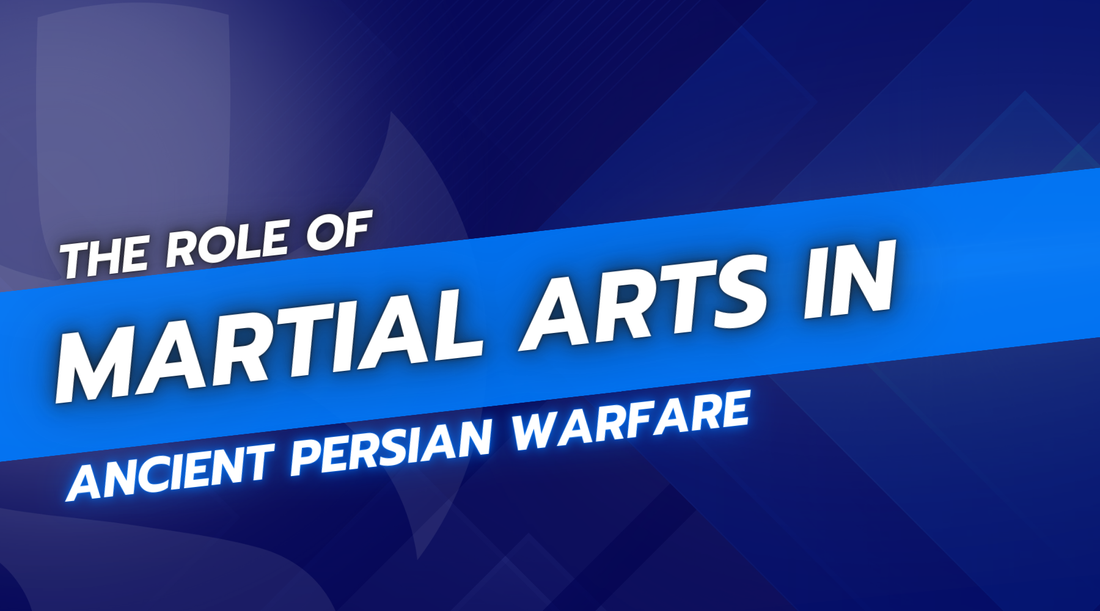
The Role of Martial Arts in Ancient Persian Warfare
Share
Ancient Persian warfare was a blend of strategic brilliance and formidable combat skills, deeply rooted in the martial traditions of the time. The martial arts practiced by Persian warriors were not merely physical exercises but a comprehensive system encompassing philosophy, discipline, and rigorous training methods. These practices played a pivotal role in shaping the Persian military might, contributing significantly to the empire's success on the battlefield.
Historical Context of Persian Warfare
The Persian Empire, founded by Cyrus the Great in the 6th century BCE, quickly became one of the most powerful empires of the ancient world. Its military success can be attributed to several key factors, including strategic acumen, innovative tactics, and a highly disciplined army. Significant military campaigns, such as the conquests of Lydia, Babylon, and Egypt, showcased the effectiveness of Persian martial strategies and the prowess of their warriors.
Philosophy and Principles of Persian Martial Arts
Persian martial arts were deeply embedded in a philosophy that emphasized physical strength, mental resilience, and moral integrity. Warriors were trained to embody virtues such as courage, loyalty, and honor. The principles guiding these martial practices were not only meant to create skilled fighters but also individuals who could uphold the values of the Persian Empire in both war and peace.
Types of Martial Arts in Ancient Persia
- Varzesh-e Pahlavani: Often referred to as the "sport of heroes," Varzesh-e Pahlavani was a traditional system combining martial arts, calisthenics, and strength training. It aimed to develop physical fitness, agility, and combat readiness.
- Zourkhaneh Training: The Zourkhaneh, or "house of strength," was a traditional gymnasium where warriors trained in various exercises, including weight lifting, acrobatics, and grappling.
- Swordsmanship and Archery: Mastery of the sword and bow was essential for Persian warriors. These skills were honed through rigorous practice and were crucial in both close combat and ranged engagements.
Training Methods and Techniques
Persian warriors underwent extensive training that included physical conditioning to build strength and endurance, weapon training to master various arms, and tactical drills to ensure coordination and efficiency in battle. This training was often conducted in structured environments like the Zourkhaneh, where warriors could practice under the guidance of experienced masters.
Role of Martial Arts in the Persian Military Structure
Martial arts were integral to the Persian military, shaping the training programs and combat techniques of the soldiers. These practices influenced the development of military strategies, enabling the Persian army to execute complex maneuvers and adapt to different combat situations effectively. The emphasis on discipline and skill ensured that Persian warriors were among the most formidable of their time.
Famous Persian Warriors and Their Martial Skills
Notable figures such as Rostam, the legendary hero from the Shahnameh, and historical leaders like Cyrus the Great exemplified the martial prowess of Persian warriors. These individuals not only excelled in combat but also contributed to the development and propagation of martial arts traditions.
Martial Arts and Persian Cultural Identity
Martial arts were a significant aspect of Persian cultural identity, symbolizing strength, valor, and the warrior spirit. This influence extended to Persian art, literature, and rituals, where martial themes were frequently depicted and celebrated. The Zourkhaneh, for instance, was as much a cultural institution as it was a training facility.
Comparison with Other Ancient Martial Traditions
Persian martial arts shared similarities with the martial practices of other ancient civilizations, such as the Greeks and Romans, particularly in their emphasis on physical fitness and combat skills. However, Persian martial arts were unique in their integration of cultural and philosophical elements, which distinguished them from other traditions.
The Evolution of Persian Martial Arts
Persian martial arts evolved significantly from the Achaemenid to the Sassanian period, adapting to changes in military technology and tactics. Foreign invasions and cultural exchanges also influenced these practices, leading to the incorporation of new techniques and the refinement of existing ones.
Martial Arts in Persian Literature and Mythology
Persian literature and mythology are replete with references to martial arts, particularly in epic tales like the Shahnameh. These stories often highlight the heroism and martial skills of legendary figures, serving as both entertainment and moral instruction for the audience.
The Decline and Resurgence of Persian Martial Arts
Over time, factors such as the fall of the Persian Empire and the rise of new powers led to the decline of traditional martial arts. However, there has been a modern resurgence, with efforts to preserve and revive these ancient practices. Today, Varzesh-e Pahlavani is recognized as a cultural heritage, reflecting a renewed interest in Persian martial arts.
Legacy of Persian Martial Arts in Modern Times
The influence of Persian martial arts can be seen in various contemporary martial arts practices. The principles and techniques developed by ancient Persian warriors continue to inspire martial artists around the world. Additionally, these traditions have become an important part of cultural heritage and tourism in Iran.
The Future of Persian Martial Arts
Looking ahead, there is potential for further revival and global recognition of Persian martial arts. With increasing interest in historical martial practices and cultural exchanges, Persian martial arts could gain a wider audience and appreciation.
Final Thoughts
The role of martial arts in ancient Persian warfare was profound, shaping the military capabilities and cultural identity of the Persian Empire. These practices not only contributed to the success of Persian armies but also left a lasting legacy that continues to be celebrated and studied today. By understanding and preserving these traditions, we can appreciate the rich history and cultural significance of Persian martial arts.
